Chair Recalls Could Lead to Injuries
June 15th, 2016. By LucyC
 Couple of chair recalls caught my eye recently—collapsible chairs collapsing—unintentionally. Uh, not so good really. Especially, if you have them round the bar.
Couple of chair recalls caught my eye recently—collapsible chairs collapsing—unintentionally. Uh, not so good really. Especially, if you have them round the bar.
The first one is the Sadie Chair and Barstool, which, it seems, has dodgy legs and screws (Nope—please don’t go there…). Apparently, “The back leg of the chairs can bend and the seat tabs or screws on the seat can loosen. When loose, pinch points between the seat and steel frame are created, posing a risk of injury.”
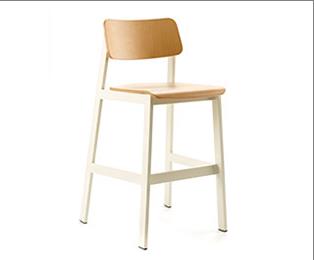
Image: cpsc.gov
One can only imagine that with the benefit of a few too many martinis this could get a bit confusing, in addition to being injurious. There are you are, sitting next to your would-be new romance thinking, ‘Pinch me, I’m dreaming!’ over how lucky your barstool choice was when…YEOW! Pinched indeed you were! From the defective chair you’re sitting in. Great. That would certainly change the mood a bit, and perhaps the rest of the evening’s plans if it meant trading your barstool for an ER gurney.
Yes, the Grand Rapids Chair company has reportedly received three reports of finger injuries including a finger laceration, bruise and fracture.
According to the recall, about 2,300 chairs are included—specifically, Grand Rapids Chair Company Sadie chairs (model 837) and barstools (model 837S). The model number is printed on the underside of the chair, on the care and use instruction label. The chairs have a seat height of 18.5” and overall width of 22.5”, and the barstools have a seat height of 30” and overall width of 22.5”. The Sadie chairs have a steel frame of various colors with a wood seat base and seatback.
Just in case you hadn’t figured this out, “Consumers should immediately stop using these recalled chairs and barstools and contact Grand Rapids Chair Company to schedule a free repair.”
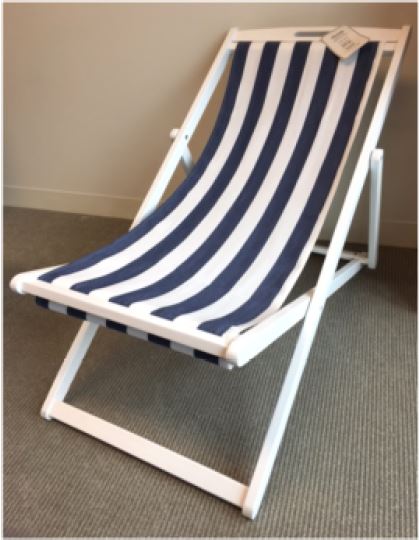
Image: cpsc.gov
The second recall is involves around 5,200 T.J. Maxx and Marshalls foldable weatherproof lounge chairs. Weatherproof but not person-proof, apparently. Fabulous. Who tests these things? Do they test these things?
Once again, you find yourself enjoying a pleasant sit down, when BAMMO! goes the barbeque and down to the floor you go. Maybe that’s why it was selling at the store for $39.99 rather than at its “Compare At” price of $70.00. But of course that’s just conjecture…
Apparently, TJX has received 15 reports of injuries from collapsing chairs. Injuries included back and tailbone injuries, one report of a fractured finger, three reports of stitches to fingers and reports of cut, bruised or swollen fingers. Really, who would have thought you get into that much trouble just from sitting down?
On this recall, consumers are being advised to” immediately stop using the recalled foldable chairs”—hello!—“and return them to any T.J. Maxx or Marshalls store for a full refund.”
Here’s the skinny—the chairs are made of an acacia wood frame and striped fabric in two styles: a natural oiled wood frame with red and white stripe fabric or a white gloss frame with blue and white stripe fabric. The chairs measure about 30 inches high by 42 inches long when unfolded. The style name, “Foldable Chair Solid Acacia Wood – Stripe Fabric – Weatherproof” is printed on the hang tag attached to the chair. The chairs sold at T.J. Maxx and Marshalls stores nationwide during March 2016 for about $40.
Time to invest in a picnic blanket I think…
Hey Guys, Are you in a State of Propecia Sexual Dysfunction?
June 10th, 2016. By AbiK

UPDATE: Since we first published this post (7/24/11), we reviewed the states in which we’ve received complaints regarding Propecia–some of which have had lawsuits filed. Forty-six US states have now been represented by Propecia complaints. The states shown in blue above are those that have seen complaints since the original post was published, below.
This whole Propecia sexual dysfunction thing got me wondering if there were any patterns (male pattern baldness aside) to where guys were experiencing the most negative Propecia sexual side effects, allegedly brought on by Propecia for hair loss treatment.
Being a data geek at heart, I took a look at where all these guys have been coming from—thinking that surely they’d hover around image-conscious L.A. or Miami—or in more major metro employment hotbeds where one might be concerned about age discrimination upon walking into an interview with a receding hairline—places like New York City or Boston or Chicago.
But it seems Propecia and its reported not-so-nice sexual side effects don’t discriminate—or at least not obviously so. Take a look above—the gray states are those from which LawyersandSettlements.com has received comments and complaints from guys sharing their Propecia sex problem stories. There’s no readily discernible pattern as to where guys who’ve taken Propecia and experienced sexual problems live. Propecia problems, it seems, have been happening allover. (And no, Hawaii and Alaska aren’t here, nor have I included Canada—but we’ve heard complaints from each).
To be clear, we’re not talking a low-key kind of sexual not-in-the-mood thing. These are guys who allege the mind is willing, wanting and very in the mood, but the body is not, shall we say, ramping up to support the mood. Alleged Propecia sexual side effects include a wide range of sexual dysfunction: erectile dysfunction, inability to ejaculate, low sperm count—leading to inability to conceive, and yes, even lack of sexual desire. Not the things a virile young (or older) man wants to be dealing with as he’s in the prime of his dating years or trying to start a family or just trying to remain intimate with his wife.
And, I don’t think I need to tell you that the situation doesn’t only affect the guys here—there’s that “other half” who’s involved. After a while, a Propecia victim may find himself absent-mindedly humming a Doors’ medley that started nicely enough with “Light my Fire” (as in, “C’mon baby…”) and ended with the more frustrating “Don’t you love her as she’s walking out the door”…as for some women, walking out will be exactly what they do.
My fear is that the above map is only the beginning as more men begin to come forward and share their stories. It takes guts to admit one’s short-comings and to reveal sexual inadequacy vs. dancing around it or remaining in denial about it takes a set of you know what—particularly when it’s as a result of trying to overcome another ego-deflator: hair loss. But if you’re in a state of sexual dysfunction and you think it’s a result of Propecia side effects, better to be in a state that’s complaining vs. a state of denial. Get some help.
Lawsuit: Being “Natural” Makes Cigarettes Better?
June 7th, 2016. By LucyC
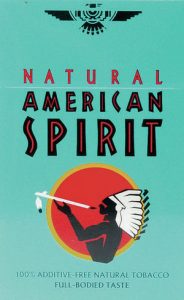 Every once in a while you come across something and just have to give your head a shake. Recently, a lawsuit—a proposed consumer fraud class action—was filed against a cigarette manufacturer over allegations the product is not as “healthy” as advertised. Ok. Who’s smoking what here?
Every once in a while you come across something and just have to give your head a shake. Recently, a lawsuit—a proposed consumer fraud class action—was filed against a cigarette manufacturer over allegations the product is not as “healthy” as advertised. Ok. Who’s smoking what here?
One Scott Johnson, named plaintiff, of somewhere, Florida, has taken it upon himself to file the lawsuit and is apparently willing to represent others who also feel they have been misinformed as to the health effects of Natural American Spirit cigarettes. How thoughtful. Or not. And note, this is not the first time Natural American Spirit cigs have been on the receiving end of raised eyebrows and push back–anti-tobacco groups have tried to ensure these cigarettes are in the FDA’s crosshairs.
But, a short period of serious reflection—or a Google search—would surely raise some doubt in the consumer’s brain, if not lay plain the fact that cigarettes are not healthy, at all. Never have been. Never will be, regardless of how natural or unnatural they claim to be. And there’s half a century’s worth of science to prove it.
On the other hand, maybe that’s not what the consumer fraud lawsuit is about. Perhaps, it’s about making an example of the company—outing them because they’re allegedly being dishonest—they are, in the words of the lawsuit, guilty of unjust enrichment, violation of the Florida Deceptive and Unfair Trade Practices Act, and violation of similar statutes in other states. In other words, making suckers out their customers.
However, in the interest of honesty, unless you’ve lived in a galaxy far, far away, for the past half a century, it would be difficult, although possibly not impossible, to remain unaware of the legion of data on the adverse health effects of cigarettes.
Notably, the plaintiff steers clear of the tar and nicotine issue, instead focusing on claims that the labeling for Natural American Spirit cigarettes states that they are “natural,” “additive-free,” “organic” and as an “unadulterated tobacco product.” And therein lies the rub.
According to the complaint, these terms are intended to imply that American Spirits are purer, healthier and safer than other cigarettes and that they present a reduced risk of tobacco-related disease. (Is that even possible?)
Johnson goes on to claim in the proposed suit that there is no scientific evidence to suggest American Spirits are any safer or healthier than other cigarettes. (That would be a difficult, if not impossible thing to prove. )
To strengthen his claim, Johnston states that research conducted by Santa Fe’s competitors has shown that American Spirits are not free of additives. Hey—everything has a shelf life—even carcinogens.
As a result, the complaint states, purchasers of American Spirits paid a premium for cigarettes that are no healthier than other lower-cost cigarettes. In other words, you are just as likely to become ill from smoking American Spirit Cigarettes as any other brand—but you may have saved a few pennies in the process. This begs the question, would they have paid more for a premium brand of cigarettes, knowing the health risks are likely similar?
Johnston, and any other interested plaintiffs, want their day in court, in the hopes of collecting actual and punitive damages, etc. Be interesting to see what happens—what the tolerance level is for willful ignorance—and deceptive marketing. A marriage made in lawsuit heaven.
FYI—the case is US District Court for the Southern District of Florida Fort Pierce Division Case number 1:16-CV-00474-JB-LF
Does Colgate Optic White Really Make Teeth Whiter?
May 23rd, 2016. By LucyC
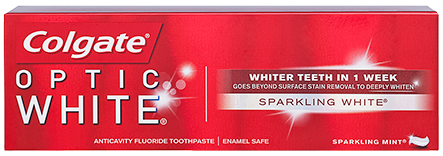 How white is white? Now there’s a burning question—one I’m sure has kept people awake for decades. And it is now set to be an issue, possibly the central issue, in a consumer fraud case recently filed against Colgate.
How white is white? Now there’s a burning question—one I’m sure has kept people awake for decades. And it is now set to be an issue, possibly the central issue, in a consumer fraud case recently filed against Colgate.
Colgate Palmolive, allegedly, has been making claims that its optic white platinum toothpaste “Goes beyond surface stain removal to deeply whiten” teeth. And, as if that weren’t enough, the toothpaste also “Deeply whitens more than three shades.” Three shades? More like 50 shades (of grey area). And just to be technical as we’re on the subject—a shade can refer to the darkening of a color—so I would think that “shades of white” may not actually be the precise meaning Colgate had in mind—but who knows.
In any event, color theory aside, Lori Canale isn’t happy with any of the shades of white she has allegedly failed to manifest using said toothpaste. So she’s filed a class action. But I’m betting this won’t be an easy one.
Aside from the difficulty in defining the extremely vague claim “three shades of white”, Canale alleges in the Colgate Optic White Toothpaste lawsuit that the toothpaste isn’t up to the job no matter what your definition—because it is 1 percent hydrogen peroxide, which is not a large enough amount of hydrogen peroxide to do the job. Further, the product is not in contact with teeth for a long enough time to do what the company claims it does.
So, what’s needed is more H2O2 and more time? But then how much is too much? Too much would almost certainly end up a lawsuit as well.
But we’re still back to the central question—just what “shades of white” are at issue here? A trip to the nearest house paint section at your local DIY store is enough to clearly make this point. Are we talking Cloud white, Duck white, Titanium white, warm white, cool white, off white, gray white, bright white—and then there are decorator whites—you know – Lily white, Whisp white, Honeycomb white, Great white (?), China white, Cotton white—should I go on? OMG. And we haven’t even touched on lighting! Think black lights—cast your mind back to your best friend’s 1970’s bedroom (at the risk of dating myself) that harboured the secret “black light”. Wow—turn that baby on and in addition to lighting up all the Who and Led Zeppelin posters—you could blind everyone in the room if you smiled. Light is very important. There’s another shade—Dazzling white—or maybe Knock-out white.
One thing is certain–no one seems to want yellow—and grey is definitely out.
But I’m not sure how one would prove that three shades of white is not achievable with this toothpaste—as no baseline has even been established. What color are you starting with—or should we use the term shade? Or tint? And is there such a thing as too white? Not to mention, the name “Optic”—meaning “of or relating to the eye or vision”—makes this kind of an “eye of the beholder” situation, no? So it’s probably off to a lab somewhere that this lawsuit will be heading as there’s just too much variability in everyone’s teeth and every possible shade of white.
This whole lawsuit takes me back to a dinner I was at once. I was sitting across the table from a news anchorwoman. And the entire time I couldn’t take my eyes of her teeth. I didn’t hear a word she said, and I have no idea how I got through the conversation, because all I could see were her teeth—and all I could think was “who has teeth that white?” I couldn’t tell you what shade of white her teeth were. And—important point—we were in restaurant lighting. Think bistro—dinner—soft lighting.
I’m sure this is a very vexing problem. Who doesn’t want white teeth? But perhaps the most important thing is that you have teeth. After that—it’s all gravy—brown gravy. Just don’t forget to brush!
We’ll be keeping an eye on this one—it’s US District Court for the Southern District of New York Case number 7:16-CV-03308-CS.
Snowblower Recalls, Just in time for Summer
May 12th, 2016. By Admin
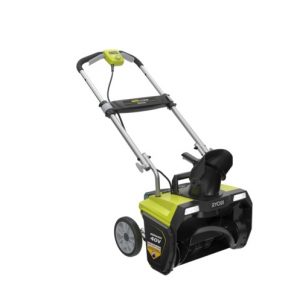 Here’s a question—what do you do when your snow blower catches fire? Who knew they could? It’s minus 20 outside, and you’re out there clearing an apocalyptic snow fall from your driveway and bammo! —up the thing goes in flames. From snow blower to barbeque—just like that. I’m betting that would improve a person’s circulation pretty fast.
Here’s a question—what do you do when your snow blower catches fire? Who knew they could? It’s minus 20 outside, and you’re out there clearing an apocalyptic snow fall from your driveway and bammo! —up the thing goes in flames. From snow blower to barbeque—just like that. I’m betting that would improve a person’s circulation pretty fast.
Seems crazy right? But a quick scan on the US Consumer Product Safety Commission (CPSC) website reveals that spontaneous combustion (ok—that’s a little melodramatic perhaps) isn’t such an uncommon trait among these devices, begging the question—has anyone bothered to test their design?
The most recent recall for snow blowers that can overheat, “posing a fire and burn hazard,” as the CSPC puts it, is Ryobi Brushless Snow Blowers. (Yes—brushless. Don’t ask.)
On April 26th—just a little late in the season guys—a recall notice was posted for these things in the US and the great white north just across the border (Canada).
The description on the CPSC website states that One World Technologies (there’s your first clue) had posted an important safety notice on its website. They were recalling 300 of these things in the US and some 370 in Canada.
Short of experiencing the pyrotechnics first hand, how are you supposed to know if you have a defective “Ryobi 40-Volt Brushless Snow Blower”? There should be model number information on the back of the blower–and you’re looking for model numbers RY40802, RY40802A and RY40822.
The CPSC blurb continues: “One World has received two reports of snow blowers overheating during or immediately after use. Of the two reports, one consumer reported seeing flames which were immediately extinguished. No injuries or property damage have been reported.” Well, that’s a relief.
The recommended course of action to avoid possibly injury or property damage? “Consumers should immediately stop using the recalled snow blowers…(if the thing caught fire I would imagine it would have stopped working of its own accord) and return them to One World Technologies for a full refund.” Of course, if you can’t get out of your driveway because you haven’t been able to clear a path because your snow blower caught fire, well…at least summer’s on the way.
The good news is you only have to travel to you nearest Home Depot, and get in line with dozens of other people, who may be returning other defective snow blowers. Here’s a list of “related recalls” as posted on the CSPS website, just in case you missed them
All (not just some, so don’t worry if you threw the packaging out) Power America Snow Throwers
Briggs & Stratton Ariens Compact Snow Blowers, Due to Fire Hazard
Toro Power Clear Snowblowers and Recycler Mowers, Due to Fire or Burn Hazard (they’ve got both seasons covered)
American Honda Snowblowers, Due to Fire Hazard
Snow Blowers by The Toro Company, Due to Fire Hazard
Sno-Tek Snow Blowers by Liquid Combustion Technology, Due to Laceration Hazard
Love this one – “Snow Throwers by Ariens Company Due to Injury Hazard.” Yes, “Injury” – leaving their options open, I guess. According to the blurb: “Users trying to clear the collector or discharge chute while the machine is operating could be at risk of a finger or hand injury hazard.” You think?
Who knew that clearing snow could be such a dangerous and adrenalin filled experience. Wonder what grass cutting season will bring?
Archive by Category
- Accidents (24)
- Airlines (9)
- Asbestos Mesothelioma (262)
- Automotive (25)
- Celebrity (14)
- Class Action (84)
- Complaints/Comments (15)
- Consumer Fraud (84)
- Contest (2)
- Court of Public Opinion (5)
- Crazy Sh*t Lawyers See (61)
- Criminal Law (4)
- Defective Products (111)
- DePuy ASR Hip Recall (2)
- Discrimination (22)
- Drugs/Medical (248)
- Elder Care Abuse (4)
- Emerging Issues (462)
- Employment (54)
- Environment (52)
- Financial (28)
- Food Illness (15)
- Human/Civil Rights (4)
- Insecurities (5)
- Insurance (16)
- Intellectual Property (16)
- Internet/E-commerce (19)
- lawsuits (161)
- Lawyers (20)
- Lawyers Giving Back (43)
- Lex Levity (10)
- Personal Injury (106)
- Pleading Ignorance (53)
- Real Estate (2)
- Recall (6)
- Scam (3)
- Securities (13)
- Settlement (81)
- Tort Reform (2)
- Totally Tortelicious (81)
- Veterans (11)
- Whistleblower (9)